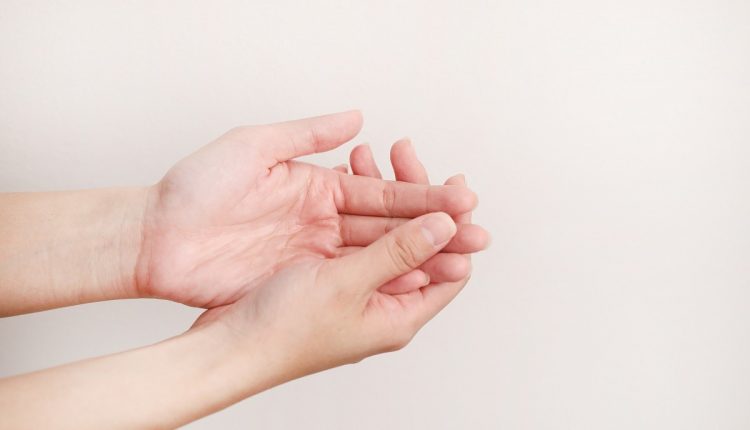
Scleroderma: definition, causes, symptoms, diagnosis and treatment
Scleroderma sees its peak onset in patients between the ages of 45 and 65 and, as is often the case with autoimmune diseases, it is women who are more affected, with a clear disproportion of 3-5:1
This is because, in general, the cells of the female immune system behave differently from those of the male immune system.
Indeed, women are genetically more active in immune responses, both humoral and cellular.
This is undoubtedly a double-edged sword because, while on the one hand it makes her more resistant to infections from outside, on the other hand it makes her more prone to developing autoimmune diseases, i.e. conditions characterised by an altered immune response towards proteins, tissues or even organs belonging to her own body, which suffer damage that will lead to pathological dysfunction.
Scleroderma: what is it?
Scleroderma – in Greek, literally ‘hard skin’ – is a chronic autoimmune disease affecting the skin.
An autoimmune disease occurs when the immune system, diseased, attacks its own tissues.
Scleroderma, also known as systemic sclerosis, occurs due to an exaggerated fibrosis (thickening) of tissues and internal organs, as well as an alteration of small-calibre vessels and abnormalities in the immune system.
The causes are unfortunately still unknown, but it has been hypothesised that environmental factors – such as exposure to solvents or toxins – may play a role in the onset of scleroderma.
Scleroderma: the symptoms and signs by which it manifests itself
Scleroderma (or systemic sclerosis) is a connective tissue disease involving the vascular system, the skin.
The most characteristic sign with which scleroderma manifests itself is skin thickening, usually localised at the hands, which eventually present an increasingly severe and progressive deformity that progresses from these to the wrist, the arm, and on to the face.
Depending on the severity and extent of the skin thickening, various forms of scleroderma can be distinguished:
- limited scleroderma – skin sclerosis extending proximally to the elbows or knees or affecting the trunk or abdomen;
- diffuse scleroderma – cutaneous sclerosis distal to the elbows and knees; also includes the CREST form (cutaneous calcinosis, Raynaud’s, oesophagopathy, sclerodactyly, telangiectasias)
- sine scleroderma form with absence of cutaneous sclerosis, but presence of typical involvement of internal organs and disease-specific antibodies.
Scleroderma: diagnosis
The earliest clinical manifestations are borne by the microvascular and autonomic nervous system and consist of Raynaud’s phenomenon – a phenomenon with which scleroderma can begin to manifest itself – which consists of a sudden change in the colour of the extremities that first become pale, cyanotic and then dark red due to reduced blood flow.
Raynaud’s phenomenon is of vasomotor origin and is a sign that may also imply other diseases, so it is not only prognostic of scleroderma.
Other tests, such as the presence of anti-Scl70 or anticentromere antibodies, ANA and anti-ENA autoantibodies, capillaroscopy and other typical patterns of the disease, are required for a diagnosis of scleroderma.
Scleroderma: the most indicated therapies
Unfortunately, there are no drugs that can cure scleroderma.
Therefore, the most indicated therapies in the event of a diagnosis only serve to contain the most obvious symptoms of the disease and delay its advancement and the possible onset of complications as much as possible.
The most successful drugs to date are vasodilators, which improve blood circulation and reduce pressure; antacids for the stomach; antiarrhythmics for heart failure; and immunosuppressants to treat the musculoskeletal system.
In order not to further slow blood circulation, patients diagnosed with scleroderma are advised to keep the temperature of their living quarters above 20°C.
Read Also
Emergency Live Even More…Live: Download The New Free App Of Your Newspaper For IOS And Android
Scleroderma, How It Manifests Itself And What Treatments Are Available
Rehabilitation Therapies In The Treatment Of Systemic Sclerosis
Psoriasis: It Gets Worse In Winter, But It’s Not Just The Cold That’s To Blame
Exposure To Cold And Symptoms Of Raynaud’s Syndrome
Scleroderma. Blue Hands, A Wake-Up Call: The Importance Of Early Diagnosis
Scleroderma: Causes, Symptoms And Treatment
De Quervain’s Stenosing Tenosynovitis: Symptoms And Treatment Of ‘Mothers’ Disease’ Tendinitis
Finger Twitching: Why It Happens And Remedies For Tenosynovitis
Shoulder Tendonitis: Symptoms And Diagnosis
Tendonitis, The Remedy Is Shock Waves
Pain Between Thumb And Wrist: The Typical Symptom Of De Quervain’s Disease
Pain Management In Rheumatological Diseases: Manifestations And Treatments
Rheumatic Fever: All You Need To Know
Arthrosis: What It Is And How To Treat It
Septic Arthritis: Symptoms, Causes And Treatment
Psoriatic Arthritis: How To Recognize It?
Arthrosis: What It Is And How To Treat It
Juvenile Idiopathic Arthritis: Study Of Oral Therapy With Tofacitinib By Gaslini Of Genoa
Arthrosis: What It Is, Causes, Symptoms And Treatment
Rheumatic Diseases: Arthritis And Arthrosis, What Are The Differences?
Rheumatoid Arthritis: Symptoms, Diagnosis And Treatment
Joint Pain: Rheumatoid Arthritis Or Arthrosis?
Cervical Arthrosis: Symptoms, Causes And Treatment
Cervicalgia: Why Do We Have Neck Pain?
Psoriatic Arthritis: Symptoms, Causes And Treatment
The Causes Of Acute Low Back Pain
Cervical Stenosis: Symptoms, Causes, Diagnosis And Treatment
Cervical Collar In Trauma Patients In Emergency Medicine: When To Use It, Why It Is Important
Headaches And Dizziness: It Could Be Vestibular Migraine
Migraine And Tension-Type Headache: How To Distinguish Between Them?
First Aid: Distinguishing The Causes Of Dizziness, Knowing The Associated Pathologies
Paroxysmal Positional Vertigo (BPPV), What Is It?
Cervical Dizziness: How To Calm It Down With 7 Exercises
What Is Cervicalgia? The Importance Of Correct Posture At Work Or While Sleeping
Lumbago: What It Is And How To Treat It
Back Pain: The Importance Of Postural Rehabilitation
Cervicalgia, What It Is Caused By And How To Deal With Neck Pain
Rheumatoid Arthritis: Symptoms, Causes And Treatment
Arthrosis Of The Hands: Symptoms, Causes And Treatment
Arthralgia, How To Cope With Joint Pain
Arthritis: What It Is, What Are The Symptoms And What Are The Differences From Osteoarthritis
Rheumatoid Arthritis, The 3 Basic Symptoms
Rheumatism: What Are They And How Are They Treated?
De Quervain Syndrome, An Overview Of Stenosing Tenosynovitis



